June 2022 - You are accessing an old version of our website. The SDGs Voluntary Commitments have been migrated here: https://sdgs.un.org/partnerships
You will be redirected to the new Partnership Platform in 10 seconds.
June 2022 - You are accessing an old version of our website. The SDGs Voluntary Commitments have been migrated here: https://sdgs.un.org/partnerships
You will be redirected to the new Partnership Platform in 10 seconds.
The Aloha+ Challenge Dashboard is an online open-data platform to track progress and inform action on the Aloha+ Challenge, Hawai‘i’s localized framework for SDG implementation. Local targets, metrics, and indicators tracked on the Dashboard were developed through a three-year stakeholder engagement process with over 500 partners led by the Hawai‘i Green Growth (HGG) UN Local2030 Hub. The Dashboard provides accountability and transparency on policy commitments, and also engages communities through innovative citizen science initiatives and technologies to inspire local action on the SDGs. The Dashboard is ready to scale with other communities and island economies to support place-based SDG implementation.
Launched in 2014, Hawai’i’s Aloha+ Challenge: He Nohona ‘Ae’oia is led by Hawai’i’s Governor, four County Mayors, Office of Hawaiian Affairs, State Legislature, and a network of private sector and civil society partners. The Aloha+ Challenge is a locally and culturally appropriate framework for the United Nations Sustainable Development Goals (SDGs), and provides unprecedented political coherence on sustainability and climate priorities.
The Aloha+ Challenge builds on Hawai’i’s history of systems thinking and generations of indigenous knowledge to identify time-bound goals across environmental, social, and economic priorities. These 2030 goals include clean energy transformation; local agriculture; natural resource management, including freshwater security, marine management, watershed protection, native species restoration, and invasive species; solid waste reduction; green workforce and education; and, smart sustainable communities targets on affordable housing, carbon mitigation, resilience and disaster management, economic prosperity, and health.
Progress is measured through an online open-data platform, the Aloha+ Challenge Dashboard (https://dashboard.hawaii.gov/aloha-challenge), to provide accountability and transparency on progress towards the SDGs. The Aloha+ Challenge Dashboard informs data-driven policy, as well as engages communities to take local action on the SDGs.
The Aloha+ Challenge Dashboard provides qualitative and quantitative data plus contextual narrative on sustainability progress in Hawai'i aligned with the UN SDGs. Localized sustainability indicators are valuable tools to measure progress, maintain accountability and provide transparency for SDG implementation. They are used to evaluate strategies; identify critical gaps needing action; highlight achievements; and guide funding and policy change.
In addition, the Dashboard includes mechanisms for community participation and interactivity to inspire action and progress on local-global sustainability goals. Three pilot initiatives are currently in development with Hawai‘i Green Growth (HGG) UN Local2030 Hub partners to support community driven data, enhanced visualizations, and interactive community engagement. Pilots include a mobile application to capture community and student school data on waste-stream diversion; visual storytelling features; and an online tool to encourage civic engagement and behavior change on Hawai‘iʻs 2030 sustainability goals.
Hawai'i’s sustainability model is being recognized and scaled globally from the UN and the Commonwealth to Tasmania and Pacific islands. The HGG Local2030 Hub is working with the Global Island Partnership to apply the Aloha+ Challenge and Dashboard as a local SDG framework with Small Island Developing States (SIDS), including Palau, the Republic of Marshall Islands, Seychelles, and Fiji. The Aloha+ Challenge can promote locally and culturally grounded implementation of the SDGs with islands, U.S. states, Asia-Pacific region, and sub-national regions of major economies.
The Hawai‘i Green Growth UN Local2030 Hub is a public-private partnership committed to advancing economic, social and environmental goals. It is the backbone organization of the Aloha+ Challenge and is comprised of over 100 key individuals and institutions across the public and private sectors, and civil society. Please visit https://www.hawaiigreengrowth.org/about/partners/ for a list of partners. Beneficiaries of the Aloha+ Challenge and Dashboard are the residents of the State of Hawai‘i, with a focus on vulnerable populations. Hawai‘i’s Aloha+ Challenge and Dashboard are currently being scaled through the Island Resilience Initiative with the support of the Global Island Partnership.
Hawai‘i Green Growth (HGG) began development of the Aloha+ Challenge Dashboard in 2014 when statewide leadership launched the Aloha+ Challenge 2030 sustainability commitment. Throughout the first year, a stakeholder engagement process was designed to identify indicators for each of the Aloha+ Challenge goals and develop the online dashboard for decision makers, practitioners, and the public to track progress on Hawai‘i’s sustainability goals. This rigorous, collaborative process provides a replicable structure to develop shared, meaningful indicators at the local level.
A key component of this project and process was to build upon existing metric and data initiatives by stakeholders, while identifying key gaps needed to track progress.
The multi-year stakeholder engagement and development processes utilized several steps to reach collaborative agreement on the indicators and metrics for each goal, including stakeholder outreach to identify existing metrics and gaps; consultations to vet recommendations; and data collection and content population. Following completion of each goal, the dashboard continues to be updated, maintained, and improved with the latest data annually. In parallel, HGG works with statewide partners on outreach, high-level engagement, and the connection to policy, resources, and implementation. Over the course of several years, the measures process was conducted for each of the six Aloha+ Challenge Goals aligned with the SDGs:
2014: Clean energy and waste reduction goal indicators and dashboard content developed.
2015: Natural resource management goal indicators developed, including freshwater security, watershed conservation, marine management, invasive species, and native species.
2016: Local food and agriculture goal indicators and dashboard content developed and launched. Annual updates completed with on-going improvements for already launched goals.
2017: Green workforce and education dashboard and smart sustainable communities dashboard were developed, including mobility, smart cities, health, affordable housing, carbon mitigation and resilience.
The Dashboard is updated annual to ensure the latest data, new technology features, and with on-going improvements to track progress. In 2018, the Dashboard launched the first community data and engagement pilots to support local action on the SDGs.
The Aloha+ Challenge Dashboard is designed to serve as an accountability resource to evaluate implementation strategies, gaps, drivers; highlight bright spots and working models; and direct funding to support policy priorities. The HGG Hub continues to use the Dashboard as a mechanism to amplify partner priorities, inform and advance strategic policy, and catalyze new collaborations. As part of the strategy to institutionalize long-term sustainability priorities, the Dashboard’s target audiences include decision-makers, practitioners, and the public, with primary users currently being state and county agencies, non-governmental partners and policy groups, and interested community and school groups. The Dashboard continues to gain international and local attention and interest from philanthropies, technology-focused organizations, and students and various schools through inquiries related to class projects, videos, and community related events.
The Dashboard is used as a policy tool by public, private, and civil society partners to inform decision-making, including during the State Legislature, climate commissions and reports and publications across Hawai‘i’s sustainability priorities. The Dashboard continues to serve as a hub for multi-sector collaborations and advance collective priorities through data tracking. This year, the Dashboard was identified as a mechanism that can track progress on business commitments to sustainability through the Hawai‘i Sustainability Business Forum and serve as a central hub to illustrate sustainable action in the Ala Wai watershed coordinated by the Ala Wai Collaboration.
In addition, the State of Hawai‘i hosted the Hawaiʻi Annual Code Challenge (HACC) utilizing the Aloha+ Challenge Dashboard as a framework for increased government transparency and efficiency on sustainability priorities. This collaboration strengthened relationships across State Departments and funders and encouraged innovation and built pathways for local workforce by connecting coders to the State’s social, economic, and environmental priorities.
The Aloha+ Challenge Dashboard also serves as an educational platform to implement the State’s sustainability goals and build practical and leadership skills in the next generation through real-world application and interaction with practitioners. The Dashboard community pilot is tracking waste diversion data from five schools and hundreds of students, who are measuring how their actions contribute towards Hawai‘i’s sustainability goals and the SDGs. The Dashboard is also supporting student curriculum and research projects, such as a local high school student developing coding to capture local fish catch data that can be applied to the Dashboard; this initial prototype will be used to spur additional student projects around sustainability metrics and initiatives aligned with the SDGs.
The Aloha+ Challenge engages a diverse network across sectors and silos, and utilizes the Dashboard as a shared platform for action on the SDGs towards 2030. Enabling conditions for Dashboard include a high-level political commitment to sustainability paired with support by a diverse network of public, private, and civil society partners through the Hawai’i Green Growth UN Local2030 Hub. Public-private partnerships were critical enabling conditions that supported coordination across stakeholders and sectors to develop and manage the open-data Dashboard, and helped to leverage limited public resources, mobilize new investment and provide additional expertise.
Financing continues to be key factor in long-term implementation of SDGs on a local level and the continued success of the Aloha+ Challenge Dashboard. This need prompted Hawai‘i Green Growth partners to explore development of green finance models that can used in Hawai‘i and applied in other places to support the Dashboard and sustainable development.
The Dashboard has spurred innovation across policy, data, technology and community and entrepreneurial initiatives. Through the HGG Local2030 Hub, public and private partners have identified new technology and outreach mechanisms to capture data, engage citizens, and inform policy-makers around SDG priorities.
Hawai‘i Green Growth partners identified engaging stakeholders, communities, and students through open-data as priority to ramp up the 2030 achievement of the Aloha+ Challenge.
Hawai‘i Green Growth is also working with the Global Island Partnership, United Nations Development Programme, and other partners to scale the Aloha+ Challenge Dashboard with Small Island Developing States (SIDS) through the Island Resilience Initiative. Additional goals include developing mechanisms to increase engagement with rural communities and older age demographics, and partnering more closely with other states and communities within the United States.
Scaling of the Aloha+ Challenge Dashboard requires increased funding and capacity to ramp-up work with national and international entities. In the short-term, the Dashboard will need to be tested with additional communities globally. To achieve this, Hawai‘i Green Growth will continue to build partnerships in each respective community and staff capacity to support those efforts. In the medium-term, sustainable forms of funding are necessary to continue community data projects including mapping and technical resources to display on-the-ground work digitally to communicate to broader audiences. In the long-term, public-private partnerships are necessary to support long-term coordination across stakeholders and sectors in communities globally as they collaboratively develop place-based sustainability goals and metrics. Public-private partnerships can help leverage limited public resources, mobilize new investment and provide additional expertise.
The initiative seeks to provide a unified platform for communities to highlight their success stories and engage directly in developing sustainability solutions on the SDGs. The Dashboard also serves as a case study for integrating community level indicators into national and international sustainable development metrics to monitor progress on Agenda 2030. The Aloha+ Challenge and Dashboard can be applied to other regions in a locally appropriate context, and is currently being scaled and implemented in Tasmania and Palau.
As an island economy, Hawai‘i serves as a microcosm for the urgent challenges facing the planet – yet is well positioned to be a laboratory for innovation to develop scalable models for sustainability. Hawai‘i established ambitious goals for both the public and private sector through the statewide Aloha+ Challenge with measurable goals and targets across environmental stewardship, resilient communities, and sustainable economic growth. The Aloha+ Challenge Dashboard process is unique in that it establishes community co-developed metrics and indicators and delivers an accountability tool housed by a government but maintained by a nonpartisan civil society partner.
The Hawai‘i Green Growth Local2030 Hub recognizes that the Aloha+ Challenge is a long-term value proposition that depends on the involvement of multiple generations, especially the future leaders of Hawai‘i to carry sustainability forward to 2030 and beyond. HGG’s primary focus for the next two years will be innovation and community engagement to enhance the utility and as well as keeping all six sustainability goals updated on the Dashboard. These initiatives have been seeded through developing new and existing partner relationships, purchasing software, and implementing prototypes to begin piloting in the next contract.
HGG will develop and launch near-term strategies to enhance the Dashboard with compelling graphics such as GIS mapping, infographics, and other data visualizations to drive behaviour change. In addition, HGG will work with partners to scope and develop next steps on “Dashboard 2.0” to integrate interactive features, community driven-data, and modeling capabilities through technology innovation through 2020. Many of the prototypes developed such as the community-driven data web application, story map, and student engagements will be piloted and scaled across counties and regions.
In further lessons learned, HGG recommends that all regions scaling the Dashboard should strengthen connections with international partners around sustainability data to uplift the global impact of local data. Leaders of global, state-level, and city-level indices should draw alignment, common indicators, reduce duplication, and close gaps to increase efficiencies. These connections will support the development of countries’ voluntary national reviews and provide a clearer picture of progress on achievement of the global goals through use of local data.
Aloha+ Challenge Dashboard: https://dashboard.hawaii.gov/aloha-challenge
Aloha+ Challenge Dashboard Food Waste Diversion App: https://hgg.datahouse.com/
Aloha+ Challenge Natural Resource Management Storymap: https://arcg.is/v00Lb
Aloha+ Challenge Dashboard on ThinkTech: https://www.youtube.com/watch?v=IJ5nrL76c0I
North American Organizations Exchange Lessons in Localizing the SDGs: http://sdg.iisd.org/news/north-american-community-organizations-exchange-lessons-in-localizing-the-sdgs/)
Four Ways Cities are Localizing the SDGs: http://www.iisd.org/blog/four-ways-cities-are-localizing-sdgs
HGG Website: https://www.hawaiigreengrowth.org
Aloha+ Challenge Website: http://aloha-challenge.hawaiigreengrowth.org
Partnerships for the SDGs: https://sustainabledevelopment.un.org/partnership/?p=8026
Hawai‘i at a Crossroads: https://www.youtube.com/watch?v=c_4e3gzwww4
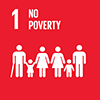
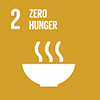
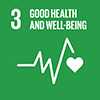
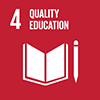
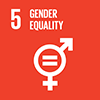
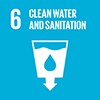
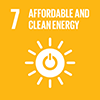
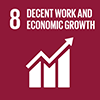
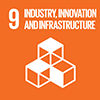
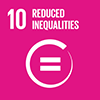
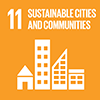
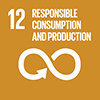
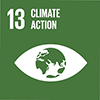
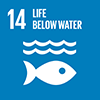
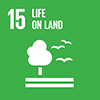
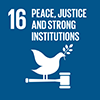
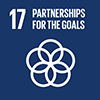
 Start: 01 January, 2014
Start: 01 January, 2014 Completion: 01 January, 0001
Completion: 01 January, 0001